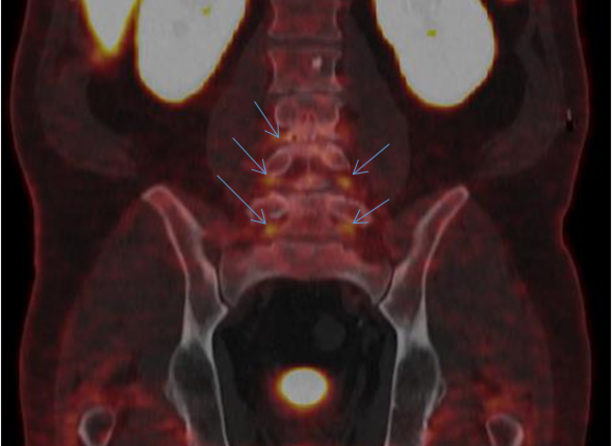Pain-Vis - PET-tracer-based visualization of the intensity and localization of peripheral longlasting pain
Ref.-Nr. 4487
Keywords: PET-tracer, pain, visualisation, localisation, intensity
Pain is probably the most common symptom and sensation of a disease, and a big individual and socioeconomic challenge. Diagnostic tools are limited and do not result in clear mechanism-based insight into the etiology of the individual pain. One shortcoming is that nearly all diagnostic approaches rely on the communication with the patient about the location, the presentation and the intensity of pain. Therefore, a method to visualize the origin of pain and to make its intensity objectively measureable is an urgent medical need. It is also a prerequisite for patient stratification for the development and testing of novel therapeutic drugs. PET-tracers are widely used as diagnostic and therapeutic tools in several types of cancer, besides other applications of visualization in various medical indications. However, there are so far only few reports, which utilize PET-tracer and PET-scan for the detection of pain (see references). The inventors have provided proof that an established PET-tracer for use in cancer can be also utilized for the detection of pain as a second medical application. They found this tracer to be enriched at the peripheral site of pain (see figure). The amount of tracer-enrichment strongly correlated with the measured change in pain sensitivity.
Vorteile
- First method to visualize the localization and intensity of peripheral long lasting inflammatory as well as neuropathic pain
- This novel application of established PET-tracers gives access to a safe, reliable and objective measurement of pain
- This application suggests usage especially to define the Location of pain and thus the area for potential therapeutic Intervention
- The application suggests the use in objective patient stratification of neuropathic pain patients
Kommerzielle Anwendung
On behalf of the University of Cologne and of the Witten/Herdecke University, PROvendis offers access to rights for commercial use as well as the opportunity for further co-development and evaluation.
Aktueller Stand
In vivo studies have been conducted in mice models of longlasting inflammatory as well as of longlasting neuropathic pain. The tracer is designed to detect pain caused by alterations in the peripheral but not in the central nervous system. The inventors currently perform a study with patients and have obtained initial positive results.
Relevante Veröffentlichungen
Ravert HT, Bencherif B, Madar I, Frost JJ. PET imaging of opioid receptors in pain: progress and new directions. Curr. Pharm. Des. 2004; 10(7): 759-68.
Peterson M, Svärdsudd K, Appel L, et al. PET-scan shows peripherally increased neurokinin 1 receptor availability in chronic tennis elbow: visualizing neurogenic inflammation? PLoS One. 2013; 8(10): e75859.
—
Eine Erfindung der Uni Köln.



